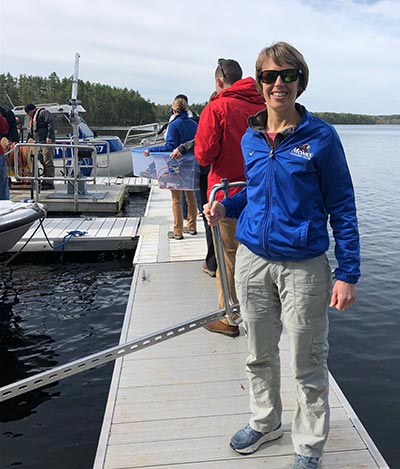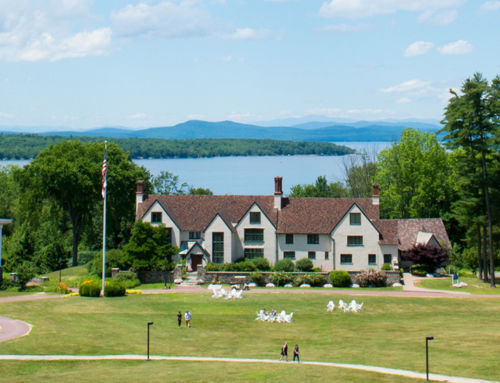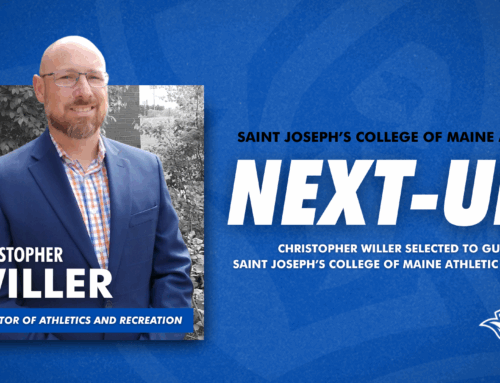 The Portland Water District (PWD) deployed a real-time water quality buoy in Sebago Lake’s Lower Bay in May. The buoy is recording and wirelessly transmitting data on temperature, dissolved oxygen, chlorophyll (a measure of algae in the lake), pH, and water clarity to the Internet where it is available for the public at�ɷɷ�.��ɻ�.�ǰ���.�� The data is being studied by PWD scientists as well as Saint Joseph’s College of Maine (ɫ����Ƶ) faculty and students. The Sebago Lake buoy project joins the Global Lake Ecological Observation Network (GLEON), a worldwide network of instrumented buoys on lakes. This network places critical lake information at the fingertips of researchers, resource managers, and the general public.
The Portland Water District (PWD) deployed a real-time water quality buoy in Sebago Lake’s Lower Bay in May. The buoy is recording and wirelessly transmitting data on temperature, dissolved oxygen, chlorophyll (a measure of algae in the lake), pH, and water clarity to the Internet where it is available for the public at�ɷɷ�.��ɻ�.�ǰ���.�� The data is being studied by PWD scientists as well as Saint Joseph’s College of Maine (ɫ����Ƶ) faculty and students. The Sebago Lake buoy project joins the Global Lake Ecological Observation Network (GLEON), a worldwide network of instrumented buoys on lakes. This network places critical lake information at the fingertips of researchers, resource managers, and the general public.
Dr. Emily Lesher of ɫ����Ƶ Sciences said, “Sebago Lake provides water for 15% of Maine’s population, so it is critical to actively sustain this resource and better understand how it responds to challenges like climate change and development. Sustainability and wellness are campus-wide focuses at ɫ����Ƶ, and this collaborative project is a very good fit and a step to protect this crucial water body.” Lesher is working along with co-investigators Brie Holme (PWD), Ryan Dorland (ɫ����Ƶ), and Nina Eduljee (ɫ����Ƶ); the team will use the data to study topics such as long term acidity and carbon dioxide trends, physical models of lake turnover, and how stakeholders interact with lake data.
“We are very excited to have real-time data,” said Portland Water District’s Environmental Services Manager Paul Hunt. “Used in conjunction with our current monthly testing – which we’ve done for decades - the continuous data generated by the buoy will help us better understand the physical and ecological dynamics of the lake, the factors that affect water quality, and will support the operation of the Sebago Lake Water Treatment Facility.”
Powered by solar panels and equipped with a variety of sensors, the 145-pound buoy has been positioned in Lower Bay’s deepest point. Seasonal maintenance, calibration, and deployment of the buoy are the responsibility of the Portland Water District.
Saint Joseph’s College and the Portland Water District applied for and received the grant to support sustainable water resource management, lake research, undergraduate research training, and community engagement. Partial funding of this buoy was provided by the Department of the Interior, U.S. Geological Survey through the Mitchell Center for Sustainability Solutions, University of Maine, under Grant No. G16AP00057.



